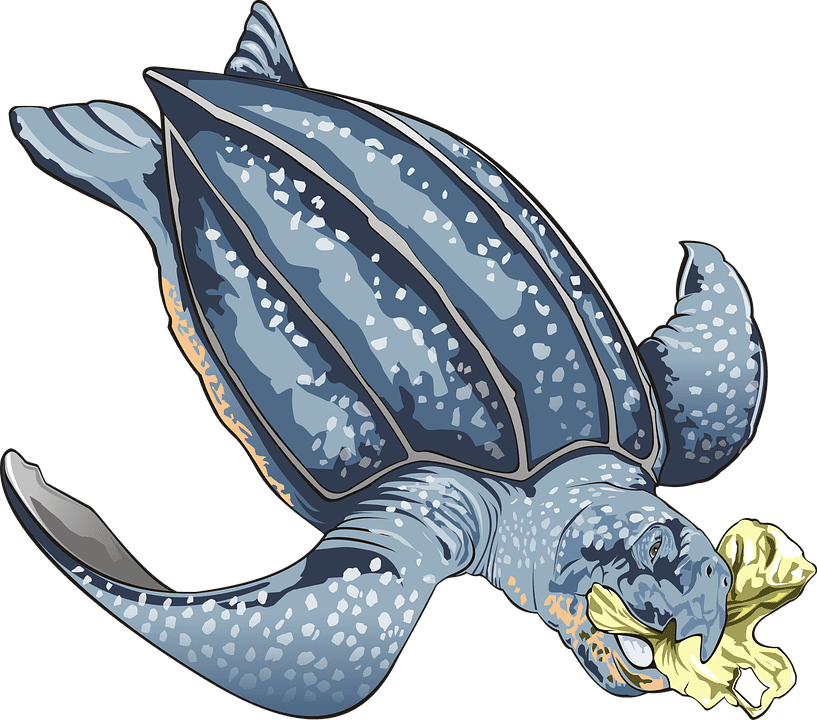
Researchers examined the guts of sea turtles belonging to seven species from across the Atlantic and Pacific oceans, as well as the Mediterranean. They found that each and every one of the 102 surveyed turtles had microplastics in their digestive system, highlighting the gruesome scale of marine plastic pollution.
“The effect of these particles on turtles is unknown,” said lead author Dr. Emily Duncan, of the Centre for Ecology and Conservation at the University of Exeter. “Their small size means they can pass through the gut without causing a blockage, as is frequently reported with larger plastic fragments.”
“However, future work should focus on whether microplastics may be affecting aquatic organisms more subtly. For example, they may possibly carry contaminants, bacteria or viruses, or they may affect the turtle at a cellular or subcellular level. This requires further investigation,” she added.
Microplastics are tiny bits of plastic, ranging from 5 millimeters down to 100 nanometers in diameter. Since mass production of plastics began in the 1940s, microplastic contamination of the marine environment has been a growing problem.
Ultimately, microplastics travel up the food chain where they can even reach humans. A portion of consumer-grade mussels in Europe could contain about 90 microplastics, according to one study. Consumption is likely to vary greatly between nations and generations, but avid mussel eaters might ingest up to 11,000 microplastics a year, by one estimate. Microplastics have also been found in canned fish, and even in sea salt. One kilogram can contain over 600 microplastics, meaning if you consume the maximum daily intake of 5 grams of salt, that’s equivalent to ingesting three microplastic particles a day.
[panel style=”panel-warning” title=”Microplastics” footer=””]
Microplastics can be categorized by their source. There are two main types, primary and secondary.
Primary microplastics are purposefully made to be that size. They were created by the manufacturer to be tiny for a particular purpose. The one that you have probably heard about the most are microbeads — little plastic spheres used in face washes, cosmetics, and toothpaste to exfoliate or scrub.
Secondary microplastics are bits of plastic that break down from larger pieces. Weathering, such as from waves, sunlight, or other physical stress, breaks the plastic into smaller pieces. Usually, it originates from waste that wasn’t managed properly.
[/panel]
The new study shows that the scale of microplastic pollution in the world’s oceans is huge. The authors found that all turtles on which they performed necropsies had synthetic particles in their guts, the most common being fibers. The sources of pollution include clothing, tires, cigarette filters, fishing nets, and other maritime equipment. In total, more than 800 synthetic particles were identified in 102 turtles. The researchers, however, only analyzed a portion of the turtles’ guts, which means that the actual microplastic content could be 20 times higher throughout the digestive system.
It’s unclear at this point what the health consequences are, since the turtles show little outside signs of adverse effects, despite ingesting copious amounts of microplastics. One major concern is that the microplastics and fibers may be exposing turtles, and other marine wildlife, to toxic chemicals, bacteria, and disease.
“It really is a great shame that many or even all of the world’s sea turtles have now ingested microplastics,” Professor Brendan Godley, senior author of the study, said in a statement.
“At the moment, this is not the main threat to this species group but it is a clear sign that we need to act to better govern global waste.”
The findings, which were published in the journal Global Change Biology, show that the scope of microplastic pollution is huge. In order to tackle this great threat to marine life, it’s important that no effort is spared in order to minimize the number of plastics that eventually get dumped into the oceans. Scientists estimate that between 4.8 million and 12.7 million tons of plastic waste could be entering the world’s oceans every year, contributing to trillions of tiny pieces of plastic waste.
“This important research demonstrates the breadth of our plastics pollution problem,” Louise Edge, plastics campaigner at Greenpeace, said in a statement. “Our society’s addiction to throwaway plastic is fuelling a global environmental crisis that must be tackled at source.”


